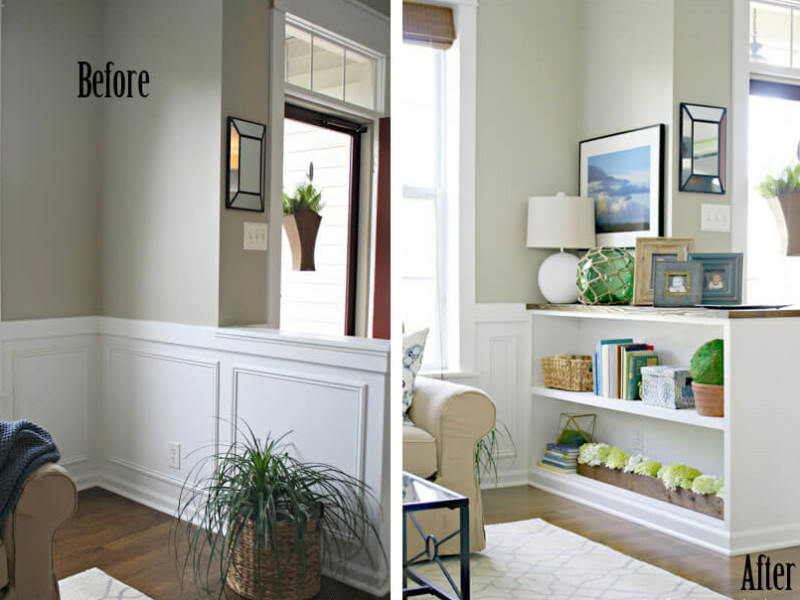How to Prepare for a Kitchen Remodeling Project
So you've decided to renovate your kitchen. Fantastic! Before you start, you should have a clear plan or idea of what to expect. Completing the following steps will help the process go smoothly:
Find a contractor.
Unless you're a licensed, experienced contractor yourself, you're going to need the help of a kitchen remodeling contractor. Be sure to meet with at least three professionals and check their past work and their reviews. Finding the right contractor to work with - one that you trust and get along with - is essential to making sure your kitchen renovation goes smoothly.
Set aside money for unplanned circumstances
During any kind of remodel, there's always the possibility of an unforeseen problem coming up. Pipes could break, mold could be discovered behind wallpaper, or electrical issues could be found. Before starting your project, set aside some money to cover any surprises. A good rule of thumb is to put aside about 10%-25% of your estimated project cost (2).
Can you DIY?
While there are many aspects to a kitchen renovation that only a professional contractor should undertake, there may be some smaller projects you can do yourself to save on the overall cost. If you feel confident in your DIY skills, talk to your contractor so see if there are any projects you can do yourself.
Review the timeline and the floor plan
Before your contractor gets started, you need to know the estimated timeline and approve the final floor plan. Make sure you review the floor plan carefully before approving it so you know exactly what your finished kitchen will look like.
Sign a contract
This step is critical. If you don't sign a contract, you have no guarantee on the project. Without a contract, you may not be able to hold the contractor responsible for any mistakes that might occur. The contract should include the scope of the project, the contractor's responsibilities, a full description of the project, the timeline, and the estimated cost.
Back to top
Kitchen Remodeling Elements to Consider
When remodeling a kitchen, there are quite a few elements to consider so you can get the kitchen of your dreams. From cabinets and countertops to appliances, flooring, plumbing, electrical, and even gas lines, you need to have a clear plan on what you want in your kitchen and where everything is placed.
Cabinets
Cabinets and hardware make up about 30% of the overall cost of a kitchen renovation (3), making them one of the most important parts of your kitchen renovation. When it comes to cabinets, you need to determine whether you want to repair or refinish your current cabinets or replace them with brand new ones. If you really love your current cabinets by they need a few repairs to make them perfect, you can expect to pay anywhere from $200-$400. If your current cabinets have a few scratches or you want to change the stain color, you can expect to pay $800-$4,000 (4).
For brand new cabinets, you have three choices (5):
- • Stock cabinets ($60-$200 per linear foot)
- • Semi-custom cabinets ($100-$650 per linear foot)
- • Custom cabinets ($500-$1,200 per linear foot)
-
Stock cabinets
Are considered the most economical type of cabinet. They're pre-manufactured in factories, making them the most affordable type of cabinet. They're also readily available and fit in most homes. However, there is no customization available for stock cabinets and they usually come in a limited selection of colors, woods, shapes, and styles.
-
Semi-custom cabinets
Are essentially stock cabinets but with a few extra customization options. Usually you can change the depth of the cabinets, the drawer size, and the door front size. Semi-custom cabinets are great if you want to have some input as to what your cabinets look like without paying for the price of full custom cabinets.
-
Custom cabinets
Are built entirely to your specifications. While they're the most expensive type of cabinet, you get to choose exactly how you want your cabinets to look and function.
Countertops
Countertops can make or break a kitchen. They contribute to the overall usability and look of your kitchen. To figure out which countertop material is best for you, first determine your budget. Countertop materials come in a wide variety of price points, even within their own categories, depending on the quality of the material and local installation costs. Here are the average prices of different materials (including average installation costs) for 30 square feet of countertop area and their pros and cons:
Laminate ($1,200-$1,950):
- • Pros: inexpensive, heat-resistant, scratch-resistant, stain-resistant, easy to clean, variety of colors and patterns
- • Cons: can be damaged by hot pots and pans as well as sharp knives
Tile ($1,050-$1,500):
- • Pros: can be a DIY project; inexpensive, unique
- • Cons: prone to chipping, prone to scratches
Concrete ($2,100-$3,000):
- • Pros: durable, customizable, stain-resistant, heat-resistant
- • Cons: requires regular maintenance
Solid Surface (Corian, Formica) ($1,500-$3,000):
- • Pros: variety of colors and patterns, renewable, scratch-resistant, non-porous
- • Cons: can be stained; not heat-proof
Stainless Steel ($3,000-$6,000):
- • Pros: modern, easy to clean, non-porous, heat-resistant, stain-resistant
- • Cons: can be scratched
Granite ($3,000-$6,000):
- • Pros: classic, heat-resistant, durable
- • Cons: prone to chipping; requires regular maintenance
Other Stone (soapstone, quartz, marble) ($2,000-$6,000):
- • Pros: heat-resistant, durable
- • Cons: prone to chipping, require regular maintenance
Recycled Glass ($1,500-$2,400):
- • Pros: easy to clean, stain-resistant, heat-resistant
- • Cons: prone to chipping, prone to scratches
Wood ($1,200-$4,000):
- • Pros: natural, long-lasting, durable
- • Cons: absorbs moisture
Back to top
Kitchen Problems and Their Causes
While foundations are built to be as solid and safe as possible, they can still be damaged. The most common issue foundations face is water in the soil - either too much water causes the soil to expand or too little water causes the soil to shrink (2). If the soil expands or shrinks equally, it's not usually too much of a problem for the foundation. It's only when sections of the soil expand or shrink more than other sections that cracks or other damages form. However, there are other events that can cause problems to a foundation:
- • Tree roots can cause cracks or displacement to foundations
- • Earthquakes can severely damage foundations and structures
- • Faulty construction can cause a number of foundation problems
- • Caulk around windows and doors has expanded. Caulk is pulled and stretched by the shifting of a house.
- • Leaking, flooding, or old age can deteriorate the foundation's concrete or mortar
Back to top
Appliances
No kitchen is complete without appliances. Before going out and purchasing your appliances, consider what your overall objective is for your kitchen remodeling. If you're planning on selling your home soon, you may want to invest in high-end quality ($300-$5000) or custom built-in appliances ($1,000-$10,00). They'll help drive up the resale value of your home. If selling your home isn't on your mind, then you may be content to purchase outlet appliances ($100-$2,000) instead. You should also consider getting Energy Star appliances ($200-$3,500) to make your home more eco-friendly, which will help you save on your monthly bills (6).
Back to top
Flooring
When it comes to choosing flooring, material and square footage are the biggest factors that determine the cost. If you're looking to cut costs on your kitchen remodel, laminate, linoleum, and vinyl flooring (7) are the most budget-friendly. To increase the value of your home, consider getting wood or tile flooring installed. If you're looking for an eco-friendly option, consider cork flooring. Be sure to take maintenance requirements into consideration when choosing flooring for your kitchen. Since water, stains, and grease are staples of the kitchen area, you'll need to determine how much time you want to spend on cleaning and maintaining your kitchen floor.
Laminate flooring, Comes in a wide variety of styles and is inexpensive, but it does require regular maintenance. It costs an average of $0.90-$2.00 per square foot.
Linoleum flooring is an eco-friendly choice that requires regular maintenance. It costs and average of $2-$5 per square foot.
Vinyl flooring is entire man-made, durable, and is the most budget-friendly flooring option. It costs an average of $0.50-$2.00 per square foot.
Wood flooring, including hardwood, bamboo, and engineered wood, is considered incredibly durable and beautiful but it requires regular maintenance. It costs an average of $3-$12 per square foot.
Tile flooring is incredibly durable and comes in a wide variety of colors. However, it is prone to chipping and cracking. The average cost of ceramic tile is $1-$20 per square foot.
Stone flooring, like granite or marble, is incredibly durable and beautiful but it is expensive and can absorb stains. It costs an average of $6-$30 per square foot.
Cork flooring is an eco-friendly option that is considered stain-resistant and mildew-resistant but it requires regular maintenance. It costs an average of $5-$12 per square foot.
Back to top
Plumbing
If you end up moving the pipes and plumbing elements during your kitchen renovation, it can increase the overall cost of your project. Having additional pipes installed to accommodate any moved or changed elements can cost you an average of $1,100. Even if you don't need to have additional pipes installed, you'll have to pay more - an average of $800 for labor and necessary permits if you need to move and relocate pipes.
Back to top
Electrical
If you're already tearing down walls for your kitchen remodel, you should consider checking out your electrical needs as well. If you're purchasing a new fridge or oven, you may need to upgrade your electrical board to accommodate them, which costs an average of $900-$1,100. Make sure you or your contractor hire a reliable electrician to look at your current electrical setup to see if it can handle your new appliances. If you're doing a complete renovation of your kitchen, you may need to move or replace outlets and fixtures or you may need to have new ones installed to bring your kitchen up to code. Doing so can add an extra $150-$200 to your project.
Back to top
Gas Lines
Moving your current gas lines can be incredibly expensive (8), so avoid doing so if you can. It requires knocking out walls to get to the lines, upending flooring, and running additional lines, which drastically increase the cost of your kitchen renovation. It's best to keep your oven and stove in its current position unless you want to spend a hefty amount of money to move the gas lines.
Back to top
Kitchen Remodeling Inspiration and Ideas
What do you want your new kitchen to look like? Before you talk to a contractor, be sure to have a few ideas of what you want for your kitchen renovation. Your kitchen should show off your unique style and personality while blending with the rest of your home's aesthetic. For great kitchen remodeling tips, ideas, and inspiration, be sure to check out our Inspiration page which includes helpful articles and plenty of incredible photos of beautiful kitchens.
Back to top
References
- McCleary, Kathy. "Which Home Improvements Pay Off?". HGTV. Retrieved 16 May 2017.
- "How Should I Budget for the Unexpected in My Kitchen Renovation?". Apartment Therapy. Retrieved 16 May 2017.
- "Kitchen & Bath Planners". National Kitchen & Bath Association. Retrieved 16 May 2017.
- "Remodel Your Cabinets". CabinetsQandA.com. Retrieved 16 May 2017.
- Bold, Cambria. "Kitchen Cabinet Styles: The Differences Between Stock, Semi-Custom, and Custom". The Kitchn. Retrieved 16 May 2017.
- "Appliances". Energy Star. Retrieved 16 May 2017.
- Lewitin, Joseph. "Resilent Vinyl Flooring Vs. Linoleum Tile Installations". The Spruce. Retrieved 16 May 2017.
- "Tips to Renovate Your Kitchen on a Budget". Today. Retrieved 16 May 2017.
Back to top
























